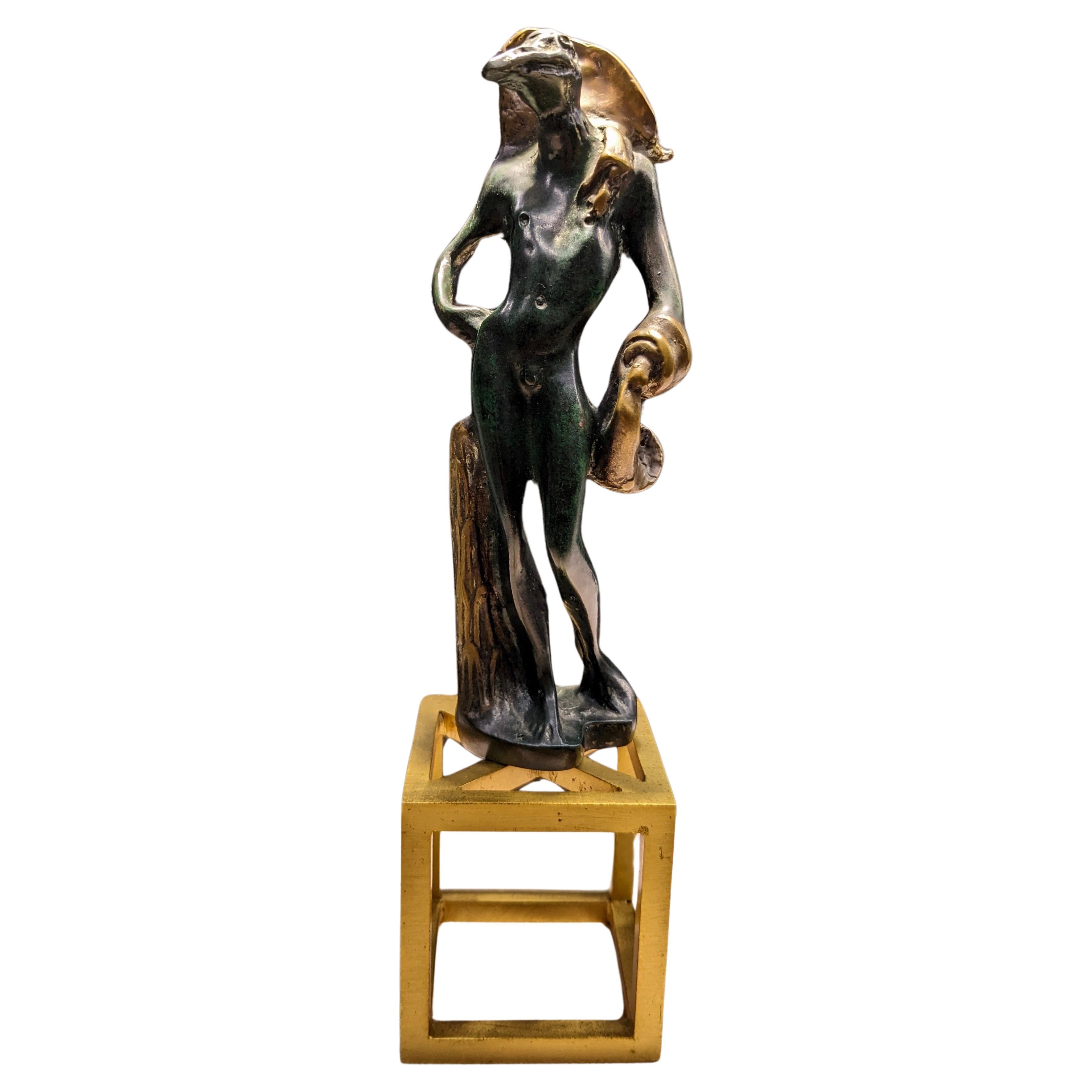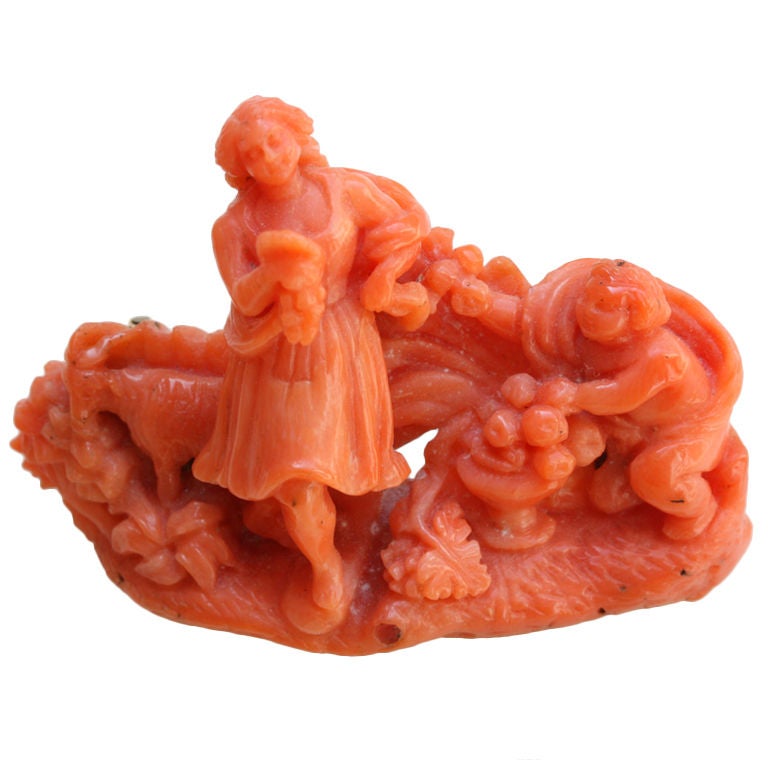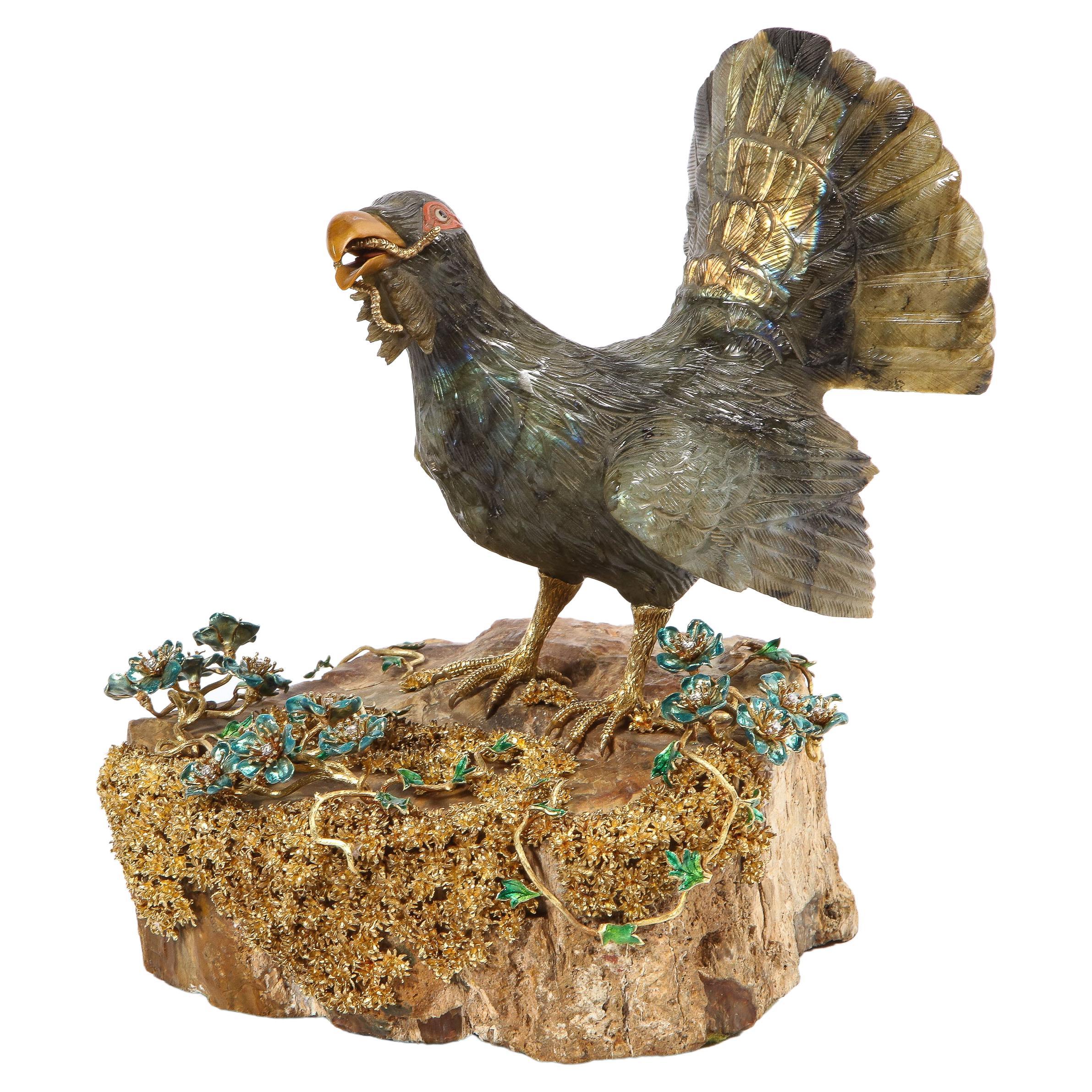Antique ArtNouveau MuchaMajorelleGruberStyle SignedNancyStainedGlass SilveredBox
About the Item
- Creator:
- Metal:
- Weight:0.84 ounces (lb)
- Dimensions:Width: 3.25 in (82.55 mm)Depth: 1.75 in (44.45 mm)Length: 3.57 in (90.68 mm)
- Style:
- Place of Origin:
- Period:
- Date of Manufacture:1890-1900
- Condition:Wear consistent with age and use.
- Seller Location:Chicago, IL
- Reference Number:1stDibs: LU3244221203282
Daum
For collectors, Daum is a name in the first rank of the French makers of art glass, along with those of Émile Gallé and René Lalique. Led in its early decades by the brothers Auguste (1853–1909) and Antonin Daum (1864–1931), the company, based in the city of Nancy, established its reputation in the Art Nouveau period, and later successfully adopted the Art Deco style.
In 1878, lawyer Jean Daum took over the ownership of a glassworks as payment for a debt and installed his sons as proprietors. Initially, Daum made glass for everyday purposes such as windows, watches and tableware, but the success that Gallé enjoyed at the 1889 Universal Exposition in Paris — the international showcase for which the Eiffel Tower was built — inspired the Daum brothers to begin making art-glass pieces. They produced popular works of cameo glass, a decorative technique in which an outer layer of glass is acid-etched or carved off to reveal the layer below, but Daum became best known for vessels and sculptures in pâte de verre — a painstaking method in which finely ground colored glass is mixed with a binder, placed in a mold and then fired in a kiln.
Though early Daum glass was never signed by individual artists, the firm employed some of the masters of the naturalistic, asymmetrical Art Nouveau style, including Jacques Grüber, Henri Bergé and Amalric Walter (whose first name is frequently misspelled). Daum also collaborated with furniture and metalware designer Louis Majorelle, who created wrought-iron and brass mounts for vases and table lamps. In the 1960s, Daum commissioned fine artists, most notably Salvador Dalí and sculptor César Baldaccini, to design glass pieces. As you see from the works offered on 1stDibs, Daum has been home to an astonishingly rich roster of creative spirits and is today a state-owned enterprise making pâte de verre figurines.
- ShippingRetrieving quote...Ships From: North Adams, MA
- Return PolicyA return for this item may be initiated within 1 day of delivery.
- YBA YoungBritishArtist Sculpture JewelryCostume First US Exhibit 2000-2001By ContemporaryLocated in Chicago, ILYoung British Artist (YBA) Philippe Bradshaw (1965-2005) was represented by blue-chip international art galleries when he was the first to reimagine iconic-art images as tapestry-like metal-chain installations in multimedia environments. He is best known for transforming hand-assembled colorful anodized-aluminum links into shimmering semi-transparent layered curtains, whose hanging long strands uniquely amplified the light and sound of his projected camcorder videos and DJ'd music. In Bradshaw's first American exhibition "Disco Damage" in 2001 at NYC's legendary avant-garde art gallery, Deitch Projects, this jewelry-costume sculpture became part of the artist's live-in evolving studio installation. While later celebrating 15 years of art happenings that had occurred at that Soho exhibition space, its gallerist-cum-museum-director Jeffrey Deitch--who was physically scarred during this unforgettable chaotic several-month experience orchestrated by Bradshaw--recounted this show in his retrospective hardcover book "Live The Art". When Bradshaw drowned in the Parisian-river Seine in August 2005 while living the high life of his skyrocketing success in Europe, he left a small body of large installations that is mostly distributed among the world's top private art collections. Notably, the Museum of Contemporary Art in Los Angeles has acquired one of his multimedia works. Last year, another assembly of his chain-curtains made a rare public appearance at new modern-art museum, Heidi Horten Collection, during its inaugural exhibition in Vienna. Since winning a major British visual-art prize in 2000 that marked Bradshaw's art-world ascent following fellow Goldsmiths-College YBAs who were close friends, this sculpture evolved from one of his most elaborate jewelry costumes that he created in London while seducing the American who became his girlfriend. Unlike other pieces of jewelry that he made as gifts to participating acquaintances while video taping...Category
Early 2000s British Contemporary Figurines and Sculptures
MaterialsMixed Metal
- DaumNancyFrance ArtDeco Signed Glass Applications LeadCrystal Sculptural VaseBy DaumLocated in Chicago, ILArt glass vase sign: Daum Nancy France. Evidenced by this Daum sculptural colorless blown and hot-shaped lead-crystal heavy vessel vase, the finest irreproducible artistic works in the history of the French glass maker featured ornamental thick glass applications, while its most in-demand ArtDeco-period pieces were made between 1925 and 1935 with very few major pieces remaining in private hands and even less without damage. As a significant gift acquired from Don Jacques Daum in 1950, a similarly shaped, constructed and sized circa-1925 vase with "stylized foliage" motif is in the collection of the French Museum of Decorative Arts in Paris as Inventory #36309. A later-produced vase with a similar application-motif at the rim, but in a "Champagne" bubbled style, is in the published book about the Leo and Irina Esterkin acquisitions from 1910-1940 titled Daum Art Deco Glass--A Private Collection. On our prime-condition antique vase, applied transparent glass is styled in high relief into a flowing undulating motif that evolved from Daum's Art Nouveau foliage designs. The angular and curvilinear shapes of this vessel epitomize the bold vases, bowls and sculptures for which Daum is best known. Its tiny pencil-etched signature on the side near the bottom reads "Daum (plus the Lorraine-cross symbol) Nancy France", which resembles some published signatures since 1925. Revealing how ahead of its time this particular design was--after WWII in 1945 coinciding with the revitalization of the French glass industry--Daum used...Category
Vintage 1920s French Art Deco Figurines and Sculptures
MaterialsCrystal
- Artist 1980s NevelsonStyle Sculptural GiltMetal Crushed Jagged Pendant NecklaceBy ContemporaryLocated in Chicago, ILLouise Nevelson, an American modern sculptor who enhanced found objects throughout the 20th Century, in the 1980s transformed found, crushed and gilt m...Category
Vintage 1980s American Artist Pendant Necklaces
MaterialsBrass, Gilt Metal
- Mimi Di N 1981 GoldGiltMetal Set Pinecone Sprays ConvertiblePendants BeltBucklesBy Mimi di NLocated in Chicago, ILThis curvilinear textural gold-gilt metal two-piece belt buckle or convertible pendant depicting pine cone and needle sprays was designed by Mimi di N in 1981, as noted in the signed...Category
Vintage 1980s American Artisan Pendant Necklaces
MaterialsGilt Metal, Yellow Gold
- Artist Modern Sculptural SterlingSilverWire Script Letter H or Acrobat PendantLocated in Chicago, ILLike Alexander Calder's handmade wire jewelry since 1929, whose smallest one-of-a-kind sculptural subjects ranged from aerial acrobats and dancers to mono...Category
Mid-20th Century American Modern Figurines and Sculptures
MaterialsSterling Silver
- KJL 1980s MuseumCollectedDesigner TwoStrandResin Boxed MidnightRose NecklaceBy Kenneth Jay LaneLocated in Chicago, ILKenneth Jay Lane--whose monogram KJL is signed on the white-rose-decorated gold-tone clasp of this double-strand black-beaded resin necklace--is only one of four bylined jewelry designers collected by The Brooklyn Museum Costume Collection At The Metropolitan Museum of Art from the two-decade period between 1970-1989, which was dominated by such bold big shapes in mostly black, white and gold. A must for any collector of the world-renowned American-founded beauty-brand Avon, its rare limited-edition retailed necklace by Lane titled "Midnight Rose" is among the most distinctive that it produced among its lines of primarily perfume, cosmetics, and personal-care products whose origin dates back to 1886 in New York. Notably, the life-sized shiny cast-acrylic rose has the look of a far more expensive carved stone, such as one cut and polished from light-filled saturated-white chalcedony, which is a hard semi-precious stone favored by Lane. Like Lane's own line when it was originally signed KJL, the decorated clasp is uniquely designed. It locks underneath with a semi-circular hinge, which enables the stylized three-dimensional smooth rose to be perfectly positioned on the right side of the upper chest with the bud facing upwards above its three-leaf sepal in contrasting gilt textured metal. This position adds sparkle from above to the three pave rhinestones in a gold-tone setting at center of the rose, as if its dew-covered bud was beginning to open in strong moonlight. To balance the bold rose shape, the black strands cross each other below at a single point, which adds another eye-catching element to the concealed-string-tied necklace. In mint condition with no sign of wear, the necklace was acquired in its original lavender Avon retail box. In contrast, the paper shows wear and tear from handling, while still featuring the jewelry designer's full-name script signature, title, and text details like how to care for this synthetic jewelry. The metal-stamped hallmark is "KJL for Avon...Category
Vintage 1980s American Contemporary Multi-Strand Necklaces
MaterialsGilt Metal
- Statua Birdman, L'homme oiseau in bronzo, Salvador Dalì edizione limitataBy Salvador DalíLocated in Roma, ITStatua in bronzo lavorazione a cera persa Birdman, L'homme oiseau firmata Salvador Dalì, edizione limitata numero 265/350. Altezza con base 27cm, senza base 20cm L'opera è fornita c...Category
Vintage 1970s Spanish Figurines and Sculptures
MaterialsBronze
- coral brooch and sculptureLocated in Amsterdam, NLA coral brooch and sculpture with a bucolic scene praising country life, Italy, 18th century.Category
Italian Figurines and Sculptures
MaterialsCoral, 18k Gold
- Coral Angel BroochLocated in Amsterdam, NLA large coral brooch of an angel, Italy, 18th century. weight: 19.1 grams dimensions: 6.1 cm.Category
Antique Early 19th Century Italian Georgian Brooches
MaterialsCoral, 18k Gold
- Rare 18K Gold, Enamel and Diamond Mounted Carved Labradorite Turkey BirdLocated in New York, NYA rare 18K gold, enamel and diamond mounted carved labradorite turkey bird sculpture on a petrified wood base, attributed to Manfred Wild, Idar-Oberstein, ...Category
20th Century German Figurines and Sculptures
MaterialsDiamond, Labradorite, 18k Gold, Enamel
- Mellerio Paris, a French Gold, Diamonds, Silver, and Smoky Quartz Carved HorseBy Mellerio dits MellerLocated in New York, NYMellerio Paris, A French Gold, Diamonds, Silver-Gilt, Rock-Crystal, Jade, Mother-Of-Pearl and Smoky Quartz, Carved Horse Sculpture, Jeweled Mounted Object. An extremely rare and unique, one of a kind French gold, diamonds, Silver-gilt, rock-crystal, jade, obsidian, mother-of-pearl, and smoky quartz carved jeweled sculpture "CHEVAUX DE LEGENDE", "A Legendary Horse" by Mellerio, Paris, circa 1991. Sitting on black obsidian base, the solid rock-crystal slab is finely applied with a carved smoky -quartz and jade horse with a harness mounted in 18k gold, brilliant -cut diamonds, rubies, turquoise, and amethyst chains and pendants. The top columns adorned with 18k gold and brilliant cut diamond pendants, the bottom with gold and mother of pearl plaques. The obsidian base with a plaque engraved: CHEVAUX DE LEGENDE" / N° 05 / MELLERIO DITS MELLER / PARIS / 5003 D The piece is in excellent condition and comes with a custom made wood case made for transport. It's very elegant and has French hallmarks throughout. A truly magnificent piece. Measures 10.5" high x 8.5" wide x 4" deep Founded in France in 1613 by the descendants of Italian immigrants from the Vigezzo Valley in the north of Italy, Mellerio is one of the oldest jewellery houses in Europe. The family business soon attracted the attention of the Royal Court and Marie Antoinette herself reportedly purchased a precious bracelet featuring 7 cameos surrounded by rubies in 1780. Later on, in the 19th century, Mellerio became the official supplier of the French Royal family and the Court of Netherland. Mellerio creates many jewellery items, all set with rare gems such as peridots, amethysts, aquamarines, citrines and topaz, applying for a patent, the flexible stem, a very supple and light jewellery mechanism. Mellerio remains also well known for their spectacular series of Art Nouveau jewels, created at the beginning of the 20th century, as well as for the creation of trophies rewarding some of the greatest footfall and tennis players of history. In 1993, the jewellery house launched their first watch collection. Today, Mellerio has stores in Paris, Japan and Hong Kong. July 14, 1789: this date is known throughout the world as the beginning of the French Revolution. According to a ledger belonging to House of Mellerio, this was also the day that the jeweler sold a golden key to the Comte de Coutance for 10 livres. This ledger, as well as inventories dating as far back as 1768, are the jeweler’s oldest archives. These archives have continued to grow over the years, as the House, established on rue de la Paix in Paris, still lives on today, still in the hands of the same family from Craveggia, in the North of Italy. The tumultuous history of the Mellerio family in France probably goes as far back as the Italian wars of the Renaissance, but the first official document proving their commercial activity in Paris dates back to 1613. This document is the famous royal warrant awarded by Marie de Medici to a number of Italian families established along the rue des Lombards, including the Mellerios, allowing them to sell “small jewelery items”, therefore granting them a small exception to the traditional monopoly enjoyed by Parisian jewelers. At that time, powerful corporations regulated the operations and customs of Parisian business, but thanks to this exceptional warrant, the Mellerios managed to escape the confines of this framework. Today, this wax-sealed document is kept at the city hall of Craveggia. From 1613 to the Revolution, the Mellerios lived between France and Italy. The corporations tried many times to put an end to their trade privileges, but all in vain, as a dynasty of sovereigns renewed the warrant. Always marrying and often retiring in Craveggia, the Mellerios continued to maintain their jewelry business in Paris. At first, they did this without a shop. Wearing backpacks (wooden boxes divided into small compartments where jewels were kept), they would tour town fairs around Paris and royal castles. This is how Jean-Baptiste Mellerio (1765-1850) is said to have sold a bracelet set with rubies and Antique cameos to Marie-Antoinette, which still exists today. Many elements seem to prove the veracity of this anecdote. The queen was particularly fond of cameos, which cover the entire background of her famous jewelry cabinet, and ruby was her favorite stone after diamond. The famous bracelet, reacquired a few years ago by the House of Mellerio, is indeed an 18th century jewel, set with antique cameos representing the profiles of Roman emperors. Two branches of the family were operating in Paris during this time, under the reign of Louis XVI: that of Jean-François (1746-1828), the paternal ancestor of the current Mellerios, and that of Jean-Baptiste (1765-1850). The French Revolution forced them to return to Italy. However, both Jean-Baptiste and François Mellerio (1772-1843), who was the son of Jean-François, were eventually able to return to Paris after the founding of the Consulate. Jean-Baptiste opened a shop at the Iron Crown of rue Vivienne, and François opened his at the Palais des Tuileries, rue du Coq Saint-Honoré. His well-organized order books give an idea of his high-ranking clientele during the “Old Regime”, among which were the Comte and Comtesse Octave de Segur, the Marquise (later Duchess) de Tourzel, former governess of the royal children, and her daughter, the Comtesse de Bearn, the Craufurds -who organized the flight to Varennes, the Duc and Duchess de Gramont, the Comtesse de Boigne, and Madame de Souza, Talleyrand’s mistress. We also see the names of the imperial family: Empress Josephine, the Queen of Holland, Princess Elisa, Caroline and Pauline. At that time, the House of Mellerio specialized, among other things, in the trade of antique cameos, a newly fashionable genre of jewel that captured the imagination of all the princesses and noble women of the time. The years of the Restauration and July Monarchy were among the most glorious. The Bourbons were back on the throne, and the clientele of the House of Mellerio had regained its former wealth. Mellerio supplied Louis-Philippe, Duke of Orléans, as well as his mother, wife and sister, with sumptuous jewels, including a set of emeralds made piece by piece, while the Duke of Bourbon, last prince of the House of Condé, offered diamonds to his mistress, the scheming Baronne de Feucheres, and Monsieur de LaFayette also bought cameos for one of his granddaughters. For the first time, Mellerio ventured into the world of arts in 1815, when Carlotta Grisi, a famous dancer who created Giselle, as well as an actress named Rachel, bought jewels at the Mellerio store on rue de la Paix. 1848 marked a new turning point. France once again became a Republic. François Mellerio handed the company over to his son, Jean, and the latter decided to travel to Spain to build a new clientele. He later became one of the jewelers of the royal family, and met Eugénie de Montijo, who remained a faithful client when she became empress of the French people. The Imperial years were lavish. During the Second Empire, Paris was a pageant of crinoline dresses designed by Worth, while jewels by Mellerio, Worth’s neighbour on the rue de la Paix, adorned the noble women of the Tuileries court. The Empress bought pearls. Mathilde Bonaparte...Category
20th Century French Figurines and Sculptures
MaterialsQuartz, Turquoise, Ruby, Rock Crystal, Jade, Diamond, Amethyst, Silver, ...
- Chess the Conquest of AnahuacBy Antoñio PinedaLocated in Taxco de Alarcon, GuerreroChess the conquest of Anahuac, winner of the first national silverware award that Mexico was awarded in the contest of the world silverware fair in Brussels. 32 handmade pieces of br...Category
Vintage 1950s Mexican Artist Figurines and Sculptures






